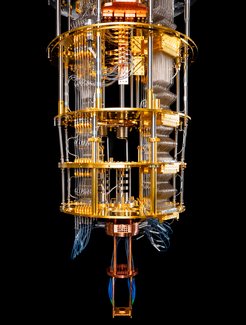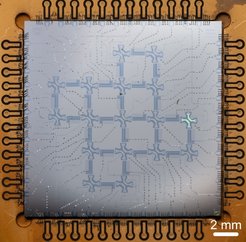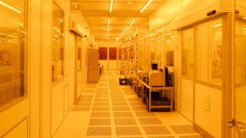News
Press Release
Joint development of superconducting quantum processors and quantum circuits: Collaboration between the Semiconductor Laboratory of the Max Planck Society, the Technical University of Munich and the Walther Meissner Institute of the Bavarian Academy of Sciences and Humanities sealed as part of Munich Quantum Valley.

Garching, October 16, 2024 - The Semiconductor Laboratory of the Max Planck Society (HLL), the Technical University of Munich (TUM) and the Walther Meissner Institute (WMI) of the Bavarian Academy of Sciences and Humanities (BAdW) have agreed on a pioneering cooperation for the joint development of superconducting quantum bits, or qubits for short, and quantum processors based on them. The collaboration, which was established as part of Munich Quantum Valley (MQV), marks a significant step in the research and further development of quantum technologies. The partnership aims to develop superconducting qubits as key components for future quantum computers. The HLL's state-of-the-art clean room, which was opened at the same time, provides an ideal environment for this and will enable the production of qubits of the highest quality at the highest international level in the future. The development of advanced integration technology also forms the basis for the realization of scalable quantum computer systems. This groundbreaking technology has the potential to revolutionize a wide range of scientific disciplines, from materials research and high-energy physics to cryptography and the simulation of chemical reactions.
With the combined expertise of the three research institutions, this collaboration will take the development of quantum computers to a new level. The Max Planck Society's Semiconductor Laboratory will contribute its outstanding expertise in the development of sensors and advanced semiconductor technologies. The Technical University of Munich is contributing its expertise in the characterization and control of quantum systems at the Chair of Technical Physics, while the Walther Meissner Institute, a renowned research center for low-temperature physics, is contributing its know-how in the fabrication of superconducting components. As a contribution to this cooperation, the semiconductor laboratory is providing parts of its ultra-modern clean room infrastructure, which is essential for the production and processing of the sensitive superconducting circuits. The Walther Meissner Institute and the Technical University of Munich are supplementing the infrastructure with state-of-the-art coating and lithography equipment for joint use.
Dr. Jelena Ninkovic, Head of the Semiconductor Laboratory of the Max Planck Society, emphasizes the importance of the collaboration: “The development of superconducting qubits represents a decisive step towards practical applications of quantum computers. Through this partnership, we are not only pooling our expertise, but also creating a unique platform for innovative research and technological breakthroughs.” Prof. Dr. Caldwell, Managing Director of the Semiconductor Laboratory, also underlines the importance of the cooperation: “With this collaboration, we are relying on the synergies between the outstanding research fields of our partners and the expertise of our laboratory. Together we will set new standards in quantum technology.”

Prof. Dr. Stefan Filipp, holder of the Chair of Technical Physics at the Technical University of Munich and Director of the Walther Meissner Institute, explains: “With the new possibilities for producing the world's best qubits that have been created, we can significantly expand the limits of quantum technology. We are thus laying the foundations for the continued success of Munich Quantum Valley in the field of quantum hardware and can sustainably consolidate and further expand our expertise in the independent construction of quantum computers.” Prof. Dr. Peter Rabl, Managing Director of the Walther Meissner Institute, adds: “This cooperation enables us to research fundamental questions of quantum physics. The collaboration offers us a unique opportunity to actively shape the future of quantum computing technology in Germany and Europe.”
The collaboration between the Semiconductor Laboratory, TU Munich and the Walther Meissner Institute will decisively advance the development of quantum computers in Germany and play a key role in international research efforts. The first joint projects and experiments are already being planned and the results are eagerly awaited.
About the Semiconductor Laboratory of the Max Planck Society (HLL):
The Semiconductor Laboratory of the Max Planck Society is a world-leading research facility in the field of semiconductor technology. The laboratory develops and manufactures highly specialized sensors and detectors for use in basic research, space, high-energy physics and other disciplines.





